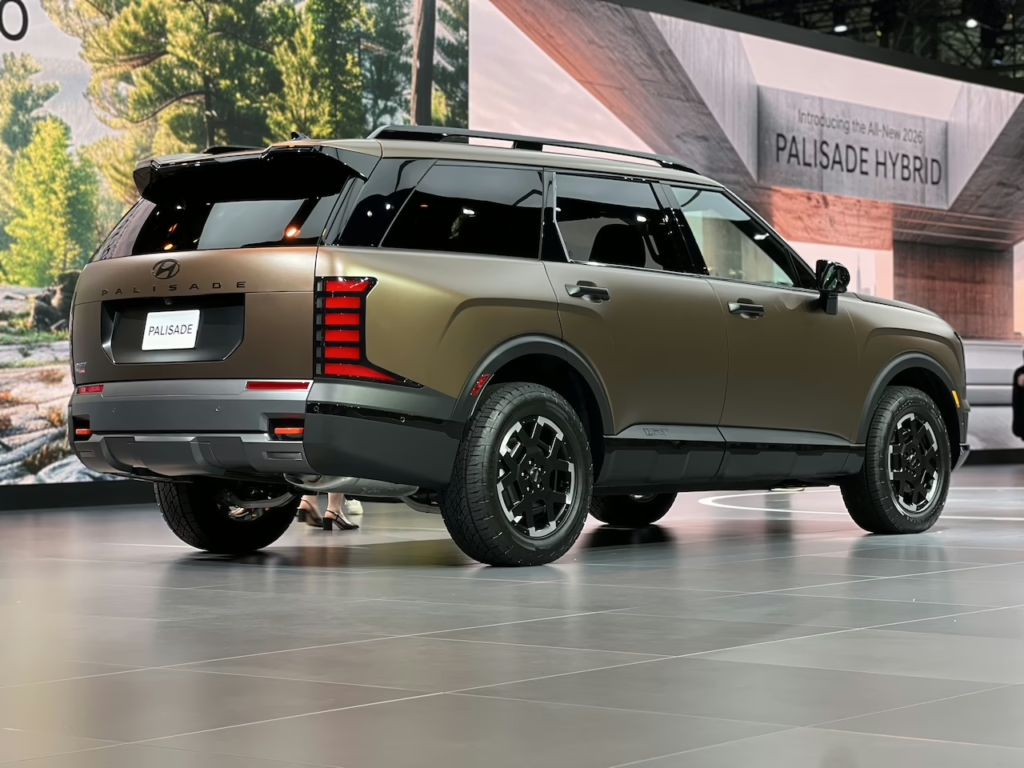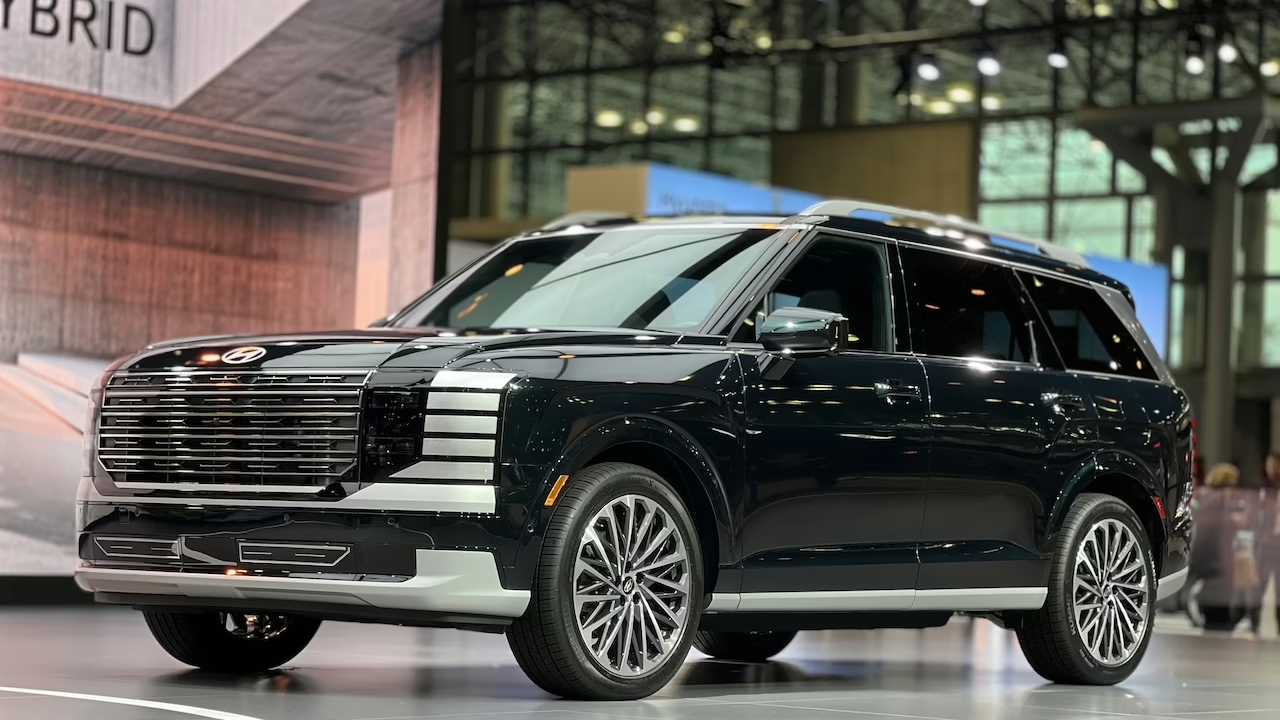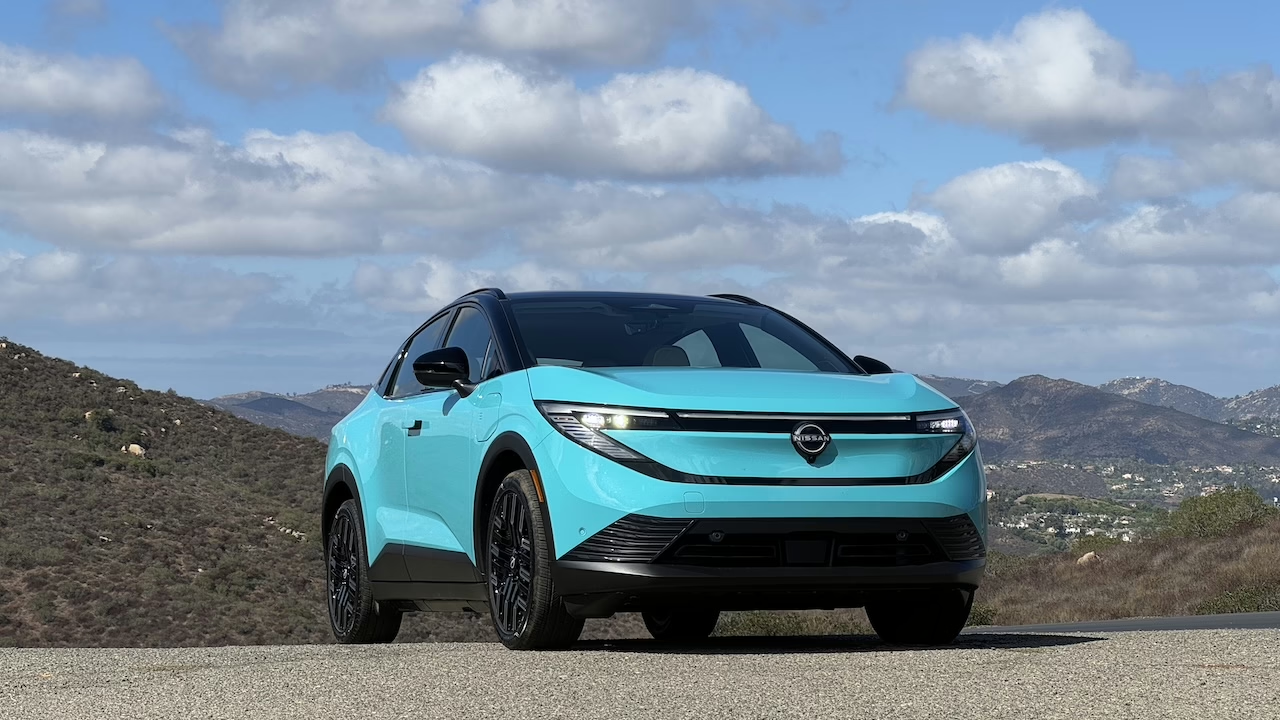Starting its second-generation, the 2026 Hyundai Palisade debuts at the New York Auto Show. It gets a new powertrain, bold styling, and an off-road version.
Looking at the new Palisade, you can see that Hyundai continues with bold, blocky design for its new crossover SUVs. We first saw this strategy in the new for 2024 Hyundai Santa Fe. It carried on—albeit a bit rounded off—with the 2026 Ioniq 9. Now it feels fully matured and fleshed out with its largest, three-row crossover.
Starting its second-generation, the Palisade also grows in size, offers an optional hybrid powertrain, and debuts a more serious XRT Pro off-road friendly version.
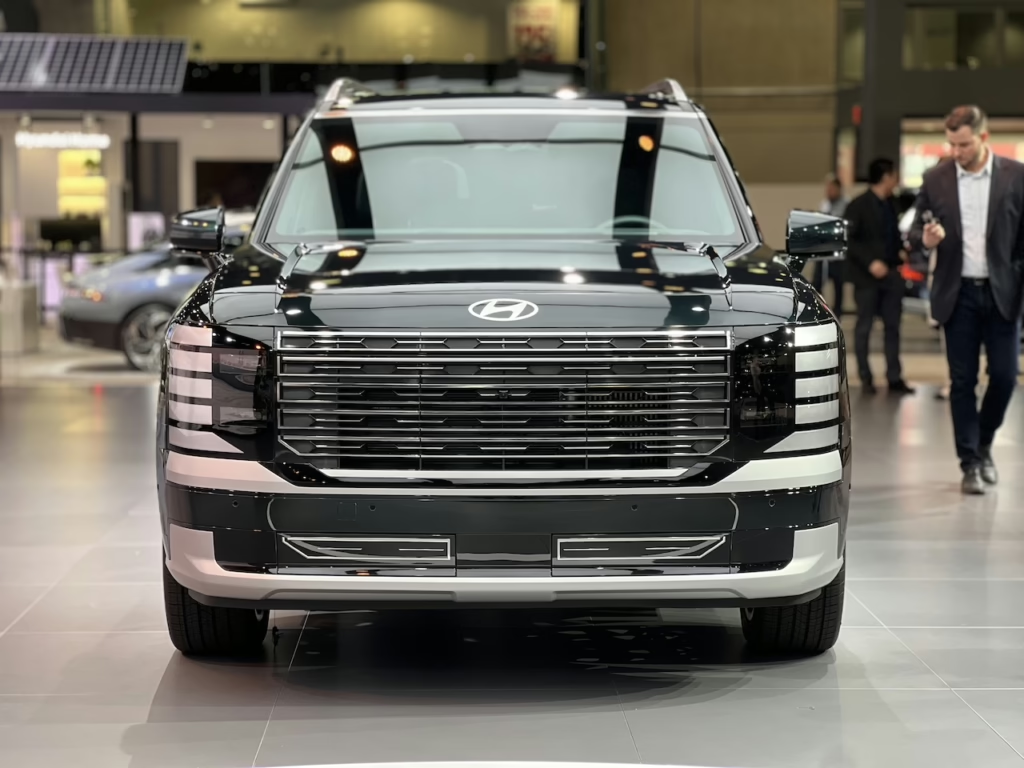
BOLD BOXY STYLE
Hyundai really squared the edges around the latest Palisade, making liberal use of a protractor to ensure plenty of 90-degree angles separating horizontal and vertical lines. Looking at the front of the crossover, the table top hood ends with a set of vertically stacked daytime running lights (DRLs) on either side of the front fascia. The main beams tuck in next to them toward the center.
In fact, the DRLs run so wide, they continue on to the side of the Palisade, ending at the front quarter panel. The front grille is made of five strong horizontal lines with an interesting three-dimensional pattern interlocked in between them.
The Palisade takes a traditional two-box shape in profile, but with a couple of clever design details. First, the remainder of the DRLs showing off. Then, the polished metal top window trim converging on a thick D-pillar of the same material. That pillar matches the base of the back mount of the also polished metal looking roof rack.

The Palisade approaches Honda Pilot size now, courtesy of an extra 2.5-inches of length to work with, not to mention a 2.7-in longer wheelbase. Length measures 199.2-inches nose to tail, with a 116.9-inch wheelbase. Up to 21-inch wheels carry that new enlarged footprint, by the way. And despite its size, Hyundai claims a nice and slippery 0.31 coefficient of drag.
The rear looks the most familiar compared to the outgoing model, but with big, bold, and also vertically stacked, taillights.

INTERIOR
Following the trends, the latest Palisade rocks a panoramic curved display, which incorporats a 12.3-in digital instrument cluster and center display of the same size. That latter connects to your smartphone via wireless Apple CarPlay and Android Auto, of course. If said device needs more power, the Palisade offers a 15-watt wireless charger right on the center console and, I kid you not, 100-watt USB-c charging, if you’re willing to go wired.
Want video evidence of any incidents involving the Palisade? Hyundai offers as an option a two-camera dash cam. It continuously records as you drive. You can access video segments via the center display or downloaded from a MicroSD card in the glove box. And, courtesy of digital key 2.0, feel free to use your smartphone instead of the key fob to lock, unlock, and start the crossover.
For a bit of traditional luxury, top trimmed Palisades will offer heated and ventilated first and second row seats. Even better, those same seats will contort into a lounge position that Hyundai calls relaxation seating. I tried it on the 2024 Santa Fe and found it quite nice for a power nap. Listen to something relaxing from the 14 speaker Bose sound system while you do it.
You’ll need to get the seven-passenger configuration of Palisade to take advantage of all of the above. Standard setup is a bench second and third row, which seats up to eight.
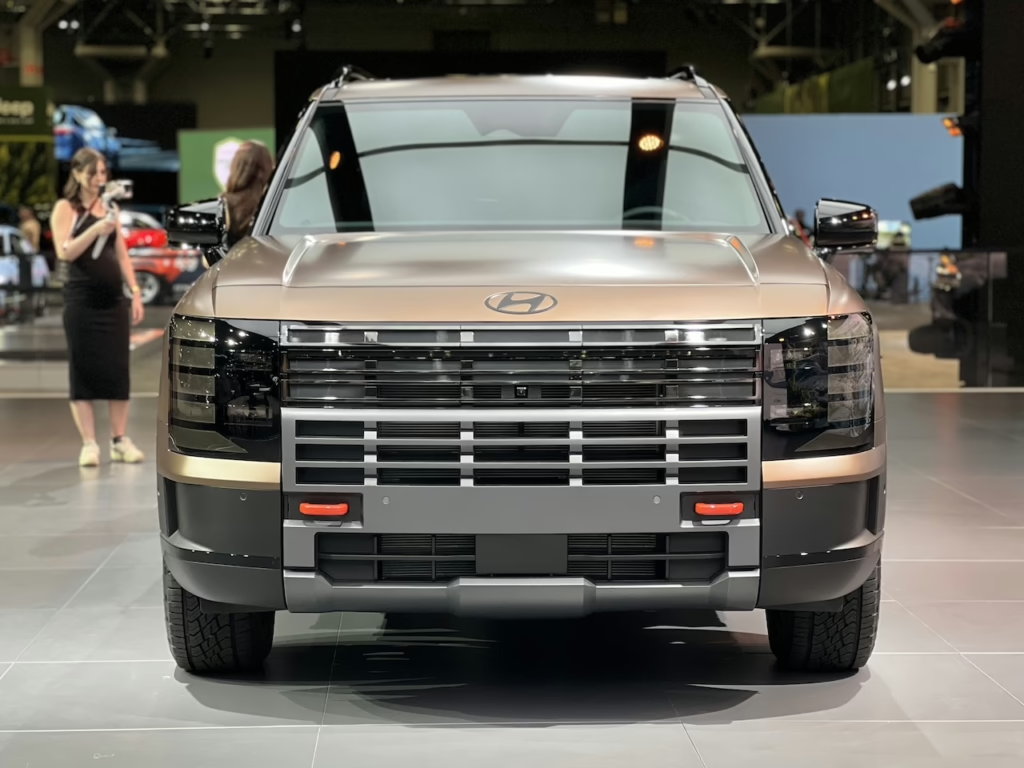
POWERTRAIN
Unlike the original Palisade, which mounted a 3.8-liter V-6 under the hood, Hyundai offers two engine options in this second-generation. The standard engine now displaces 3.5-liters in a V-6 configuration. But, despite losing a bit of displacement, peak power nearly matches the outgoing motor.
The new one makes 287 horsepower and 260 lb.-ft of torque, down four horsepower and two lb.-ft from before. From there, power channels through an eight-speed automatic transmission (likely the same one as the outgoing model) and on to either the front- or all-four-wheels.
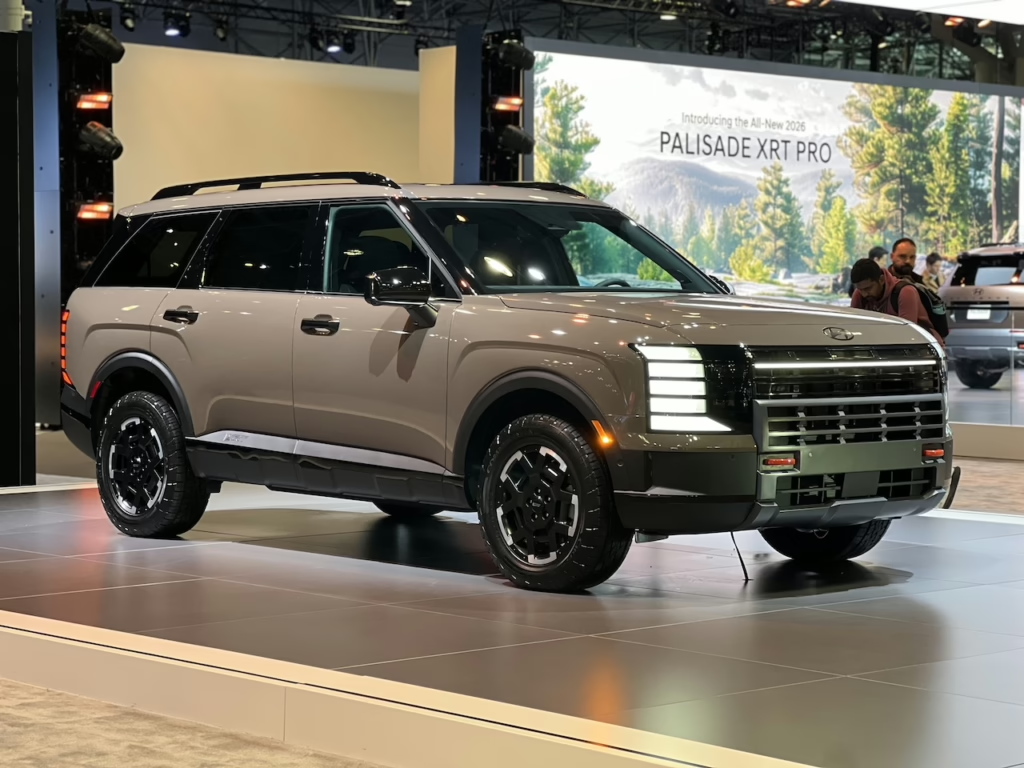
The optional engine swaps in a turbocharged 2.5-liter inline-four-cylinder, it makes 258 horsepower on its own. It also gets help from two electric motors encased in the six-speed automatic transmission. Total system output jumps to 329 HP and 339 lb.-ft of torque. We do not yet know fuel economy, but Hyundai expects the hybrid version of the Palisade to crest 30 mpg on the highway and make it more than 600 miles between fill-ups.
Regardless of what’s under the hood, the Palisade can tow. But going hybrid hurts that a bit. The turbo 2.5-liter can handle up to 4000 lbs. The V-6 manages as much as 5000 lbs. My gut tells me the transmission limits capability here, but that’s speculation.

XRT PRO CHASSIS
New to the world, Hyundai built the Palisade XRT Pro trim of Palisade. Much more than a styling package with a nominal nod to off-roaders here and there, the XRT Pro now includes some legit equipment.
That includes: a rear limited-slip differential, 8.4 inches of ground clearance (one-inch more than standard), better approach/breakover/departure angles, all-terrain tires (size: 255/60R18), surround view cameras, standard AWD, pitch and roll and elevation displays, compass, front and rear recovery hooks, and more.
That puts the XRT Pro in between the lightly equipped Nissan Pathfinder Rock Creek and the fairly serious Honda Pilot Trailsport, in my view anyway.
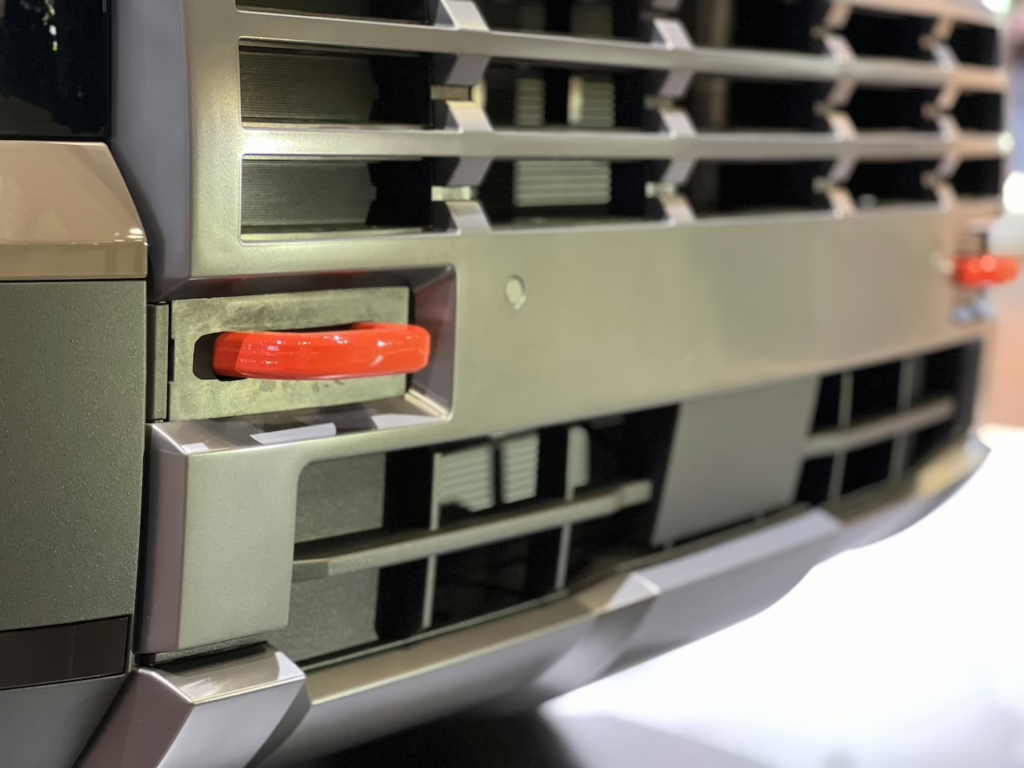
Hyundai added unique styling to the XRT Pro as well. It looks the part. Time will tell how effective these updates truly are. Regardless of being on or off a road, you do get a bit luxury in the XRT Pro: heated and ventilated seats, heated steering wheel, Bose sound system, and more.
CONCLUSION
I really liked the first-generation Hyundai Palisade, especially after they updated it for the 2023 model year. And I think the new one is the best execution of the latest crossover design language yet. Time will tell if it drives better. And how much it costs for that matter. Hyundai says to expect them to reach dealers this summer, with the hybrid versions coming in the fall. We’ll learn more as that date approaches.
Looking forward to getting behind the wheel as soon as possible.
